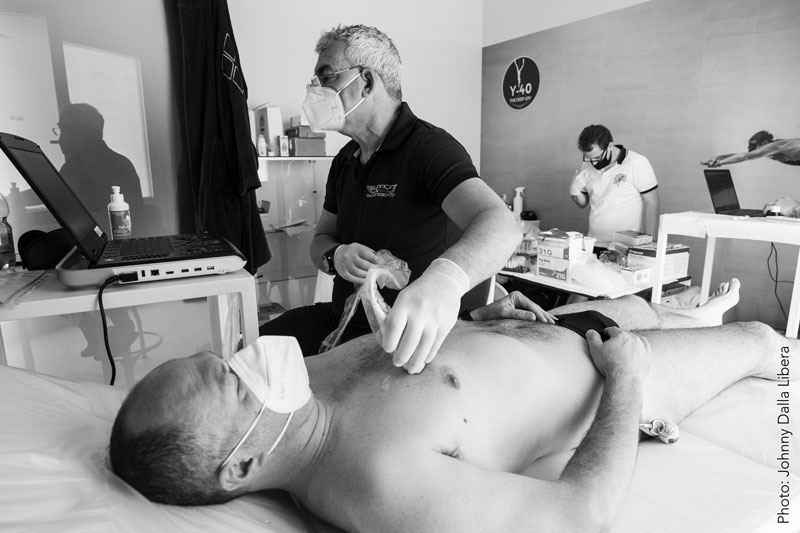
A new guideline for determining fitness to dive based on the type and severity of symptoms.
In response to member inquiries, our evolving understanding of the impacts of Covid-19, on divers, and considering the evolution of variants on vaccinated subjects, the DAN Europe Medical Team is updating its recommendations for returning to diving after Covid-19 that were published April, 2021.
Specifically, the Diver Medical Screen Committee (DMSC), in collaboration with DAN, the World Recreational Scuba Training Council (WRSTC), the Undersea Hyperbaric Medical Society and the World Underwater Federation (CMAS) has recently revised its screening system to focus on symptoms most likely to be problematic for divers, as discussed below.
Note that it remains essential for anyone with health concerns or problems to be medically evaluated prior to diving. Note also, that the epidemiological situation is constantly evolving and this document may be subject to further changes and updates.
Updated 02/2022
Depending on the clinical manifestation of Covid-19, divers can be divided into 4 groups:
Group A
-
Asymptomatic, paucisymptomatic (nasal congestion and/or sore throat, in the absence of fever, cough, malaise, headache and/or myalgia) with transitory clinical manifestations.
-
In such cases, returning to diving is not recommended before 7 days after recovery.
-
A medical check-up with your treating doctor is recommended if you do not feel you have regained normal physical and mental capacity.
-
Group B
-
Mild illness (See Table #1) where no hospitalisation and/or antiviral, antibiotic, cortisone or heparin treatment has been required.
-
In these cases, we recommend a clinical assessment by the family doctor or a Diving Medicine specialist after 10 days since recovery. The assessment should take into account the age of the diver, any condition identified as diving risk factors, vaccination status.
Group C
-
Divers who have presented with moderate illness (See Table #1) or have otherwise required hospitalisation and/or antiviral, antibiotic, cortisone or heparin treatment due to SARS-CoV-2 infection.
Group D
-
Divers with severe or critical illness (See Table #1).
Further Diagnostic Tests
In Groups C and D, given the lack of solid scientific evidence on the prevalence and severity of complications affecting the various organs and systems, the following further diagnostic tests, after full clinical recovery, are recommended.
-
In Group C:
-
Exercise stress test with monitoring of cardiac electrical activity and assessment of O2 saturation at rest, during and after the test
-
Spirometry test
-
Diffusing capacity of the lungs test
At discretion of the treating doctor, the following may be added:
-
Colour Doppler echocardiography
-
24hr Holter ECG including a training session or exercise stress test
-
Chest X-rays or HRCT
-
Blood tests
-
Group D : Cardiopulmonary Exercise Testing (CPET), is strongly recommended in addition to the above mentioned tests.
Table #1
|
Condition/Stage |
Features |
|---|---|
| Asymptomatic infection | Diagnosis of SARS-CoV-2 in the complete absence of symptoms |
| Paucysymptomatic form | Presence of symptoms such as nasal congestion and/or sore throat, without fever, cough, malaise, headache and/or myalgia |
| Mild illness | Presence of mild symptoms (e.g. fever, cough, loss of taste and smell, malaise, headache, myalgia), without shortness of breath, dyspnea, or abnormal chest imaging |
| Moderate illness | SpO2 > or = 94% and clinical or radiological evidence of pneumonia |
| Severe illness | SpO2 < 94%, PaO2/FiO2 <300, respiratory rate > 30/min (in adults), or pulmonary infiltrates > 50% |
| Critical illness | Respiratory failure, septic shock, and/or multi-organ failure |
Here you can download this update.
Learn more about DAN Europe's research being conducted on returning to diving after Covid-19.
